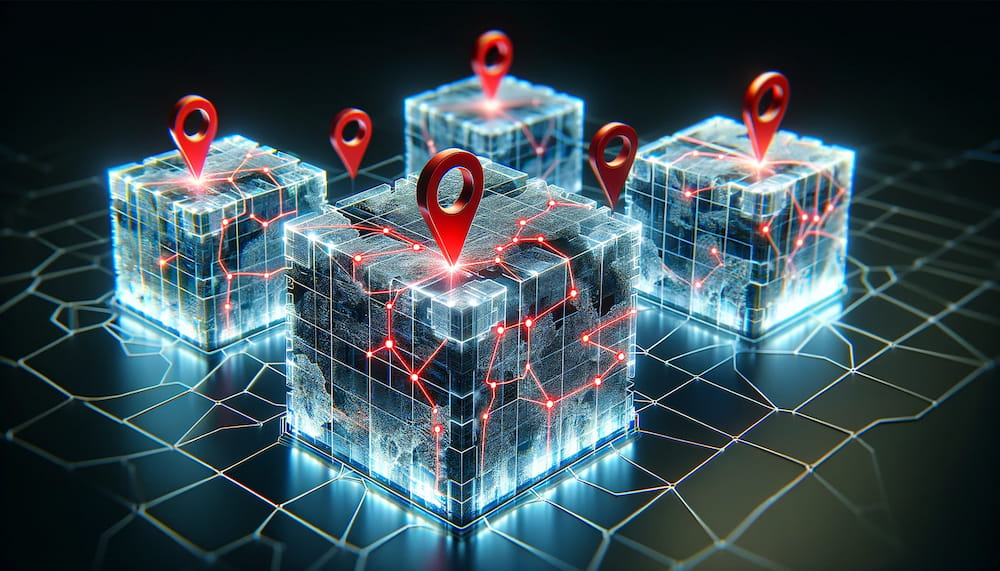
Our regular navigation apps are on the edge of a big change. Web3, the next step of the internet based on decentralization, is set to change how we navigate. At the center of this shift is blockchain technology, offering special abilities to improve Web3 navigation apps. This article explores how blockchain can make these apps better, building trust, encouraging people to join in, and leading to a new era of navigation.
Understanding the Fundamentals
Before we look at the revolutionary aspects of blockchain-powered Web3 navigation apps, it’s important to understand the main ideas behind this technological change. Blockchain is a type of ledger that records transactions across a network of computers. It works without middlemen, so everyone can see what’s happening and trust each other.
Integration of Blockchain in Navigation Apps.
In the era of Web3, navigation applications are undergoing a significant transformation, leveraging blockchain technology to provide enhanced functionalities and user experiences. Here is an explanation of how blockchain is transforming the industry of navigation apps:
Immutable Mapping Data
Web3 navigation apps can ensure the integrity and accuracy of mapping data by using blockchain’s immutable ledger. This decentralized approach mitigates the possibility of data tampering or manipulation, thereby furnishing users with dependable navigational information.
Incentive Systems Utilizing Tokens
Blockchain technology enables the implementation of tokenized incentive mechanisms within navigation apps, fostering community participation and improving data accuracy. Users can earn free crypto rewards for contributing to map updates, verifying locations, or providing real-time traffic information. This creates a self-sustaining ecosystem driven by collective efforts.
MapMetrics, a free drive-to-earn crypto navigation app that rewards its users for anonymously contributing their data, is an exemplary illustration of a Web3 navigation application.
Smart Contracts for Seamless Transactions
Smart contracts, self-executing agreements with predefined terms, are crucial in Web3-based navigation apps. Microtransactions can be performed for premium features, monetary rewards for contributors, or seamless access to exclusive content. The streamlined payment procedures and the absence of intermediaries enhance effectiveness and lower expenses.
Decentralized Governance
Traditional navigation apps are often controlled by a single entity and are often centralized. Blockchain-enabled Web3 navigation apps, on the other hand, employ distributed governance models. The community collectively decides on app updates, feature enhancements, or protocol tweaks, ensuring inclusivity and transparency.
Enhanced Privacy and Security
Privacy issues are prevalent in traditional navigation apps, as personal info can be exploited. User privacy and data security are prioritized by the blockchain’s encryption and decentralized architecture. The blockchain secures personal data and encrypts it, giving users complete control over it.

Challenges of Blockchain-Powered Web3 Navigation Apps
Although blockchain technology holds promise for revolutionizing Web3 navigation apps, it is imperative to address several obstacles to ensure widespread adoption and success:
User Adoption and Understanding
Blockchain technology, which is still relatively new and intricate for numerous users, poses a hindrance to widespread adoption when it comes to comprehending the functioning of blockchain-powered navigation applications and the advantages they provide over conventional alternatives. It is essential to educate users and simplify the user experience in order to achieve widespread acceptance. However, there is promising growth in the adoption of cryptocurrency, which indicates an exponential increase in its usage. This bodes well for the space.
Scalability and Performance
Blockchain networks, especially those based on proof-of-work consensus techniques, often encounter difficulties when it comes to scalability and transaction velocity. Navigating apps rely on constant information updates and responsiveness, which can be a challenge on small-scale blockchain networks. Blockchain-powered navigation apps need to be scaled up and optimized to run smoothly. Projects like Streamr are in action to tackle these issues, hinting at a bright future.
Regulatory Uncertainty
The framework for regulating digital currency and blockchain technology is constantly changing and varies considerably from one jurisdiction to another. Apps that use the blockchain for navigation may encounter obstacles related to data security, financial regulations, and taxation. However, we observe promising growth in adoption from significant institutions such as the EU and especially the US, which are taking the first steps forward.
Standardization and interoperability.
The seamless user experiences require the interoperability of diverse blockchain networks and navigation applications. Nonetheless, achieving interoperability and establishing common standards within a decentralized ecosystem may prove to be intricate. In the absence of interoperability, users may encounter fragmentation and compatibility issues while utilizing diverse navigation applications or transitioning between platforms.
Resource intensiveness and cost
Blockchain technology can be costly and resource-intensive to integrate into navigation apps. The development and maintenance of blockchain infrastructure, smart contracts, and decentralized governance mechanisms require significant financial and technical resources. High upfront costs and ongoing maintenance expenses may pose barriers to entry for small-scale developers and startups.
Developers, regulators, and other stakeholders will need to collaborate to foster innovation and create user-friendly experiences in the emerging landscape of blockchain-powered Web3 navigation apps.
Conclusion
In conclusion, blockchain technology can make Web3 navigation apps better because it makes things more transparent, secure, and helpful for users. By leveraging blockchain’s decentralized architecture, tokenized incentives, and smart contracts, Web3 navigation apps empower users, redefine community engagement, and pave the way for a more decentralized digital future.